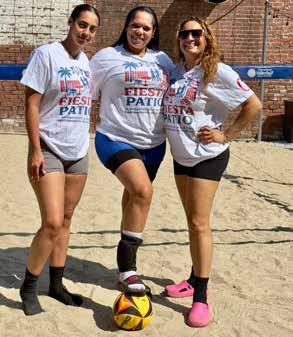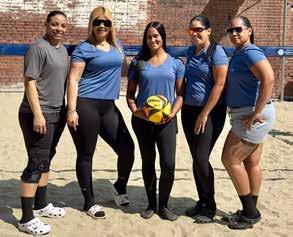Un Periódico Diferente / A Different Kind of Newspaper

Un Periódico Diferente / A Different Kind of Newspaper
Un Periódico Diferente / A Different Kind of Newspaper
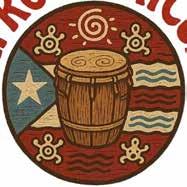
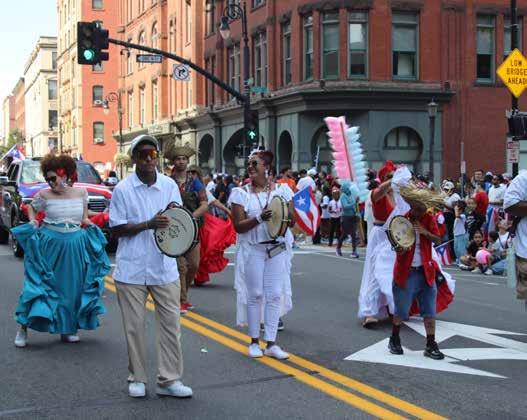
ent Kind of Ne October 2025 Volume 21 No. 11
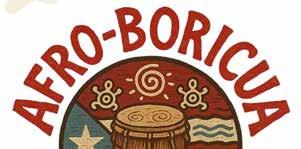
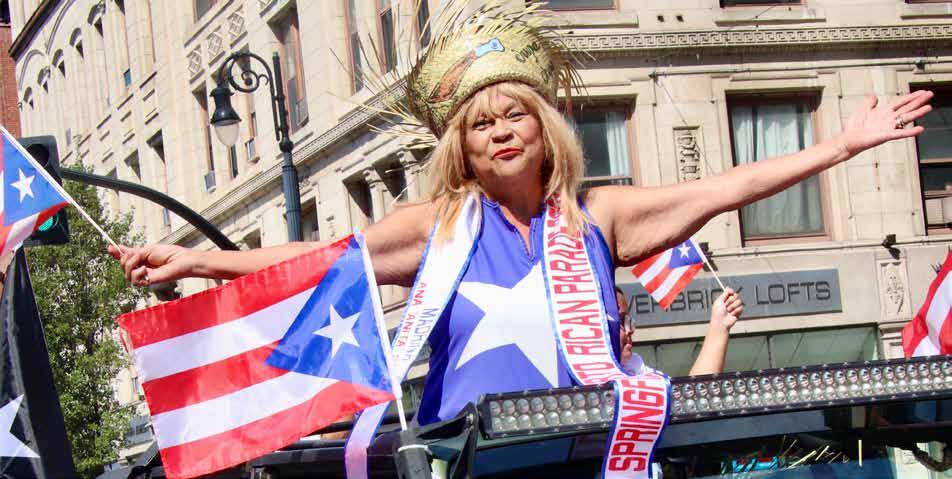
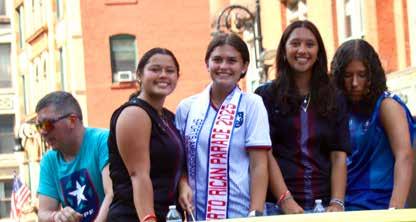
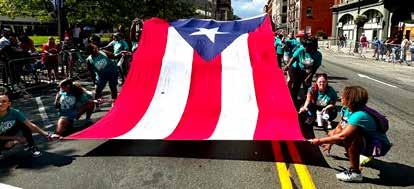

Foto del Mes /Photo of the Month

Un Periódico Diferente / A Different Kind of Newspaper

Un Periódico Diferente / A Different Kind of Newspaper
Un Periódico Diferente / A Different Kind of Newspaper


ent Kind of Ne October 2025 Volume 21 No. 11





Foto del Mes /Photo of the Month
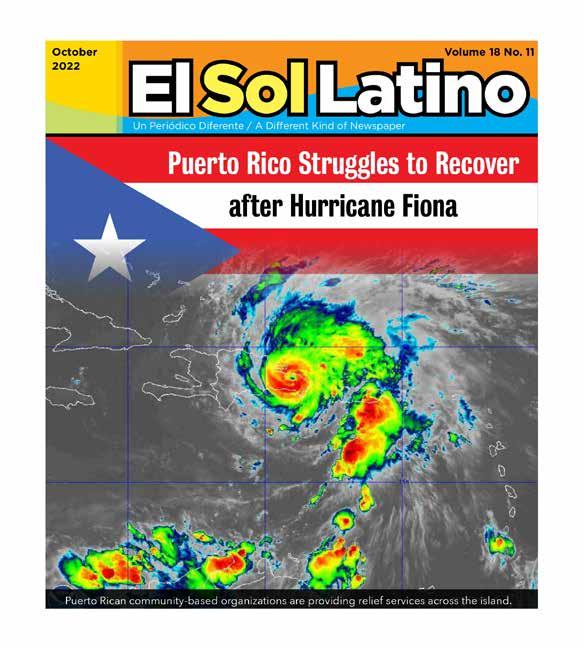
Un podcast sobre la historia del archipiélago de Puerto Rico y el Caribe
Conversaciones con expertos sobre el tema y personalidades de interés. Con el historiador público Ramón A. González-Arango López.

¡Nuevo episodio todos los jueves! ¡Comparte y disfrútalo!
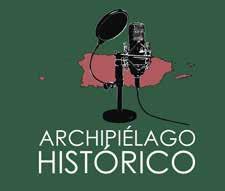
2 Foto del Mes /Photo of the Month Remembering our October 2022 Edition
3 Portada / Front Page The 35th Springfield Puerto Rican Parade
5 Salsa Sal Pa’ Fuera at MGM Springfield Plaza 2025
6 El Festival Cultural de la CosechaNuestras Raíces 2025
7 Philly’s Puerto Rican Day Parade embodies strength of the mainland’s second-largest Boricua community
9 Opinión / Opinion
Palestine: Two Years of Slaughter
12 Every Belief, Every Application: Why FAFSA Matters
13 Arte / art
Identidad en tinta: El Arte del Tatuaje en el Museo Wistariahurst
14 Literatura / Literature Palimpsestos
16 Libros / Books
American Negra - A memoir
17 Cuba’s Cosmopolitan EnclavesImperialism and Internationalism in Eastern Sugar Towns
18 Deportes / Sports
Fiesta Patio hosts 1st Women’s Beach Volleyball Tournament
Editor Manuel Frau Ramos manuelfrau@gmail.com 413-320-3826
Assistant Editor Ingrid Estrany-Frau
Art Director Tennessee Media Design
Business Address El Sol Latino P.O Box 572 Amherst, MA 01004-0572
Editorial Policy
El Sol Latino acepta colaboraciones tanto en español como en inglés. Nos comprometemos a examinarlas, pero no necesariamente a publicarlas. Nos reservamos el derecho de editar los textos y hacer correcciones por razones de espacio y/o estilo. Las colaboraciones pueden ser enviadas a nuestra dirección postal o a través de correo electrónico a: info@elsollatino.net.
El Sol Latino welcomes submissions in either English or Spanish. We consider and review all submissions but reserve the right to not publish them. We reserve the right to edit texts and make corrections for reasons of space and/or style. Submissions may be sent to our postal address or via electronic mail to: info@elsollatino.net.
El Sol Latino is published monthly by Coquí Media Group. El Sol Latino es publicado mensualmente por Coquí Media Group, P.O Box 572, Amherst, MA 01004-0572.
September 14, 2025
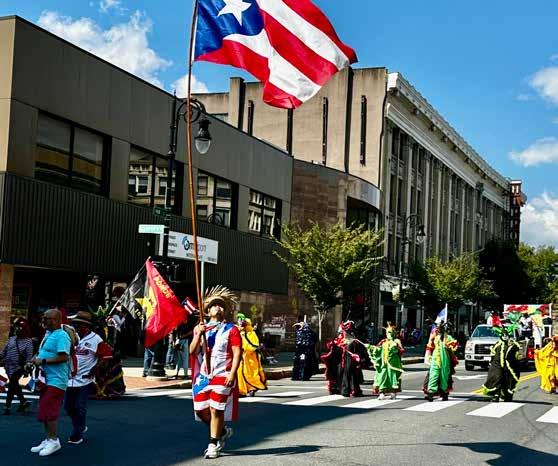
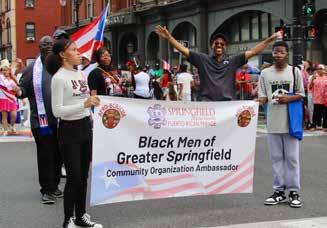
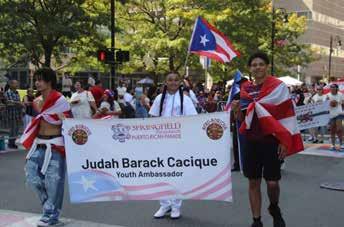
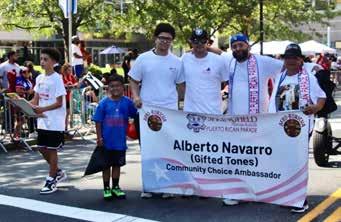
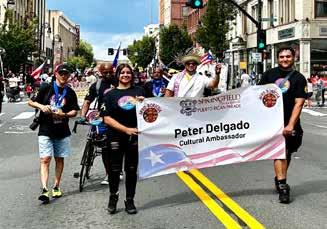
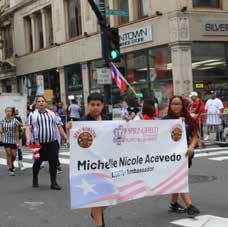
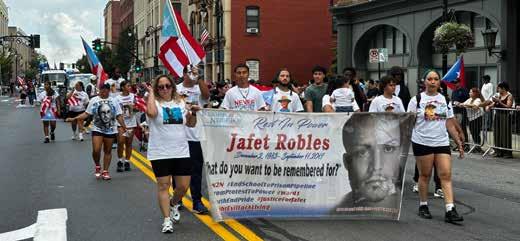
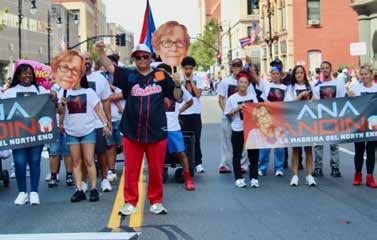
September 14, 2025
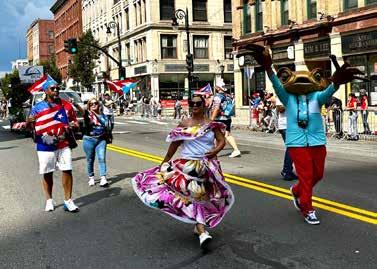
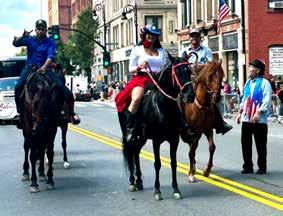
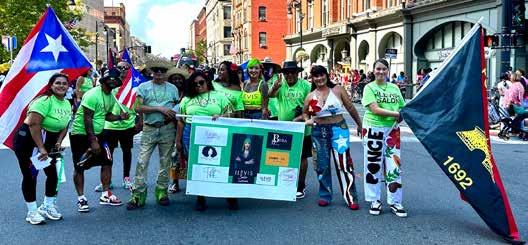
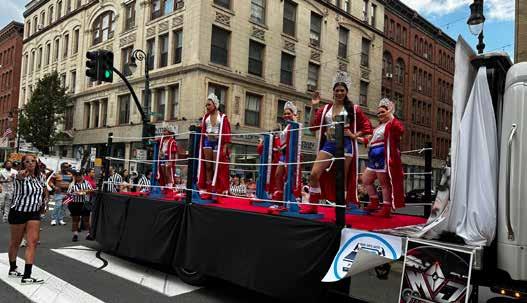
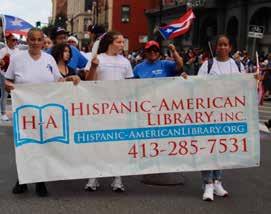
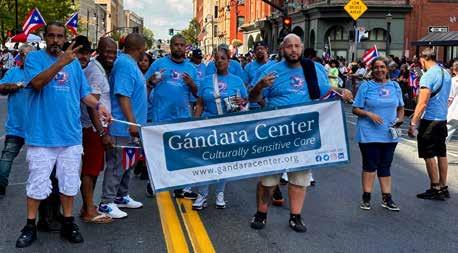
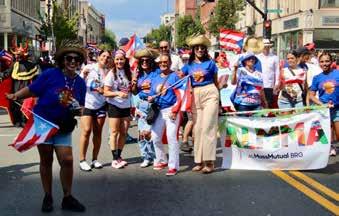
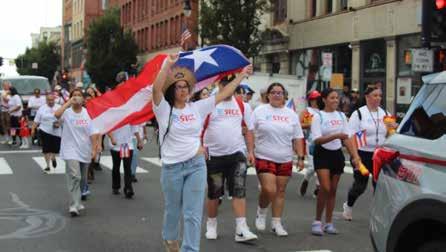
In partnership with MGM Springfield, Salsa Sal Pa’Fuera celebrated the grand finale of its summer season on Sunday, September 14th. MGM Springfield hosted a live Salsa concert on the MGM Springfield Plaza that paid homage to Osvaldo Román. This event followed the 35th annual Springfield Puerto Rican Parade.
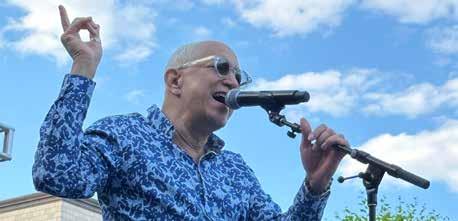
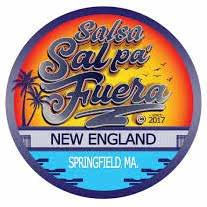
Osvaldo Román, a figure of salsa and former vocalist of two renowned salsa bands, Puerto Rican Power, and Grupo Niche. He is known for his interpretation of songs such as, “Para Amarte Ahora”, “Juguete de Nadie”, “Tu Cariñito”, “La Culebra” y “Ruperto Mena” among many others.
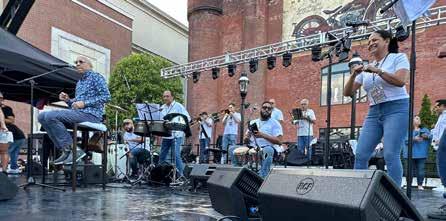
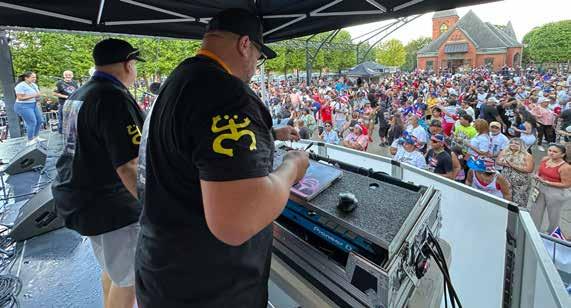
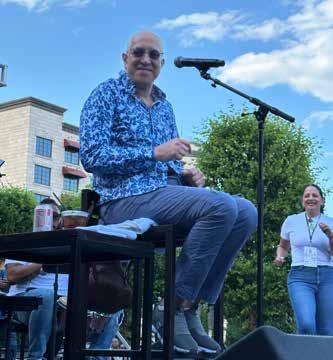
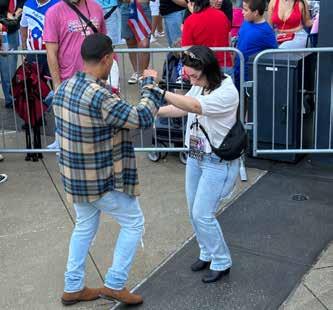
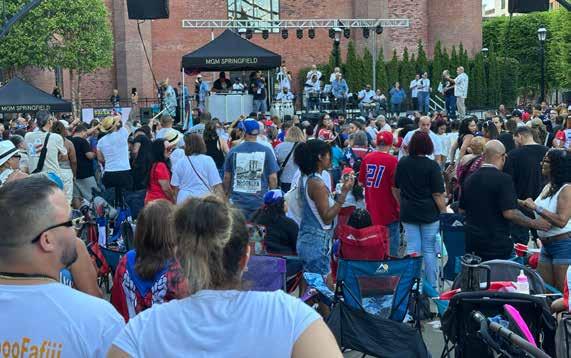
El pasado sábado 13 de septiembre, nuestra comunidad se vistió de fiesta para celebrar el esperado Festival Cultural de la Cosecha 2025. Este evento reunió a familias, agricultores, artesanos, pequeños negocios y organizaciones locales en una jornada llena de música, cultura y sabor local. La celebración contó con música en vivo por DJ Kevin y José Febre y su Orquesta Salsa Brava. El evento se realizó en La Finca, localizada en 24 Jones Ferry Road, Holyoke. Durante el festival, más de 300 personas disfrutaron de actividades para todas las edades, incluyendo presentaciones musicales en vivo, baile, un vibrante mercado de agricultores y una muestra de artesanía locales. Los visitantes pudieron saborear productos frescos de temporada, apoyar a pequeños negocios y compartir momentos de alegría en un ambiente familiar y acogedor. Queremos expresar nuestro profundo agradecimiento a los voluntarios y a todos nuestros patrocinadores. Gracias a Holyoke Community College, Bresnahan Insurance Agency, Holyoke Gas and Electric, Mass Cultural Council, and Holyoke Medical Center. También a los artistas, miembros de la comunidad que hicieron posible este evento, al Sheriff Cocchi y el Sheriff Department por su acto heroico de limpiar la finca después de la tormenta. Su dedicación y entusiasmo hicieron que este Festival Cultural de la Cosecha fuera una experiencia inolvidable que reflejara la alegría de nuestra comunidad.
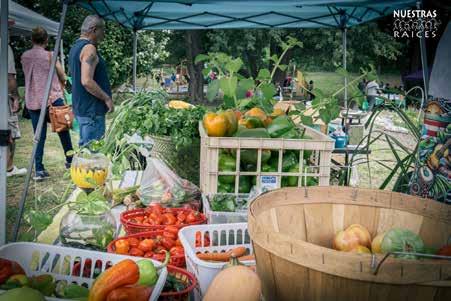
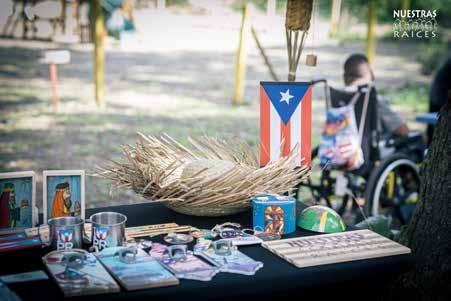
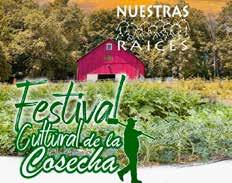
Con optimismo y entusiasmo, ya pensamos en el próximo año, reafirmando nuestro compromiso con la celebración de la agricultura, la cultura y la unión que nos define. Para más información: 413-535-1789 ext. 209 o viste nuestras oficinas en 329 Main Street, Holyoke Fotos cortesía de Nuestras Raíces
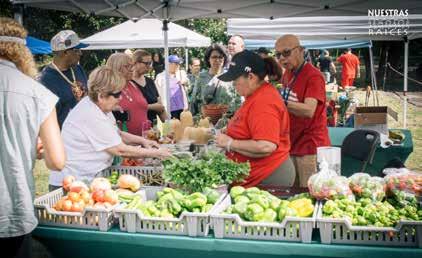
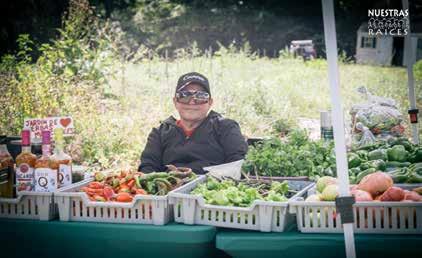
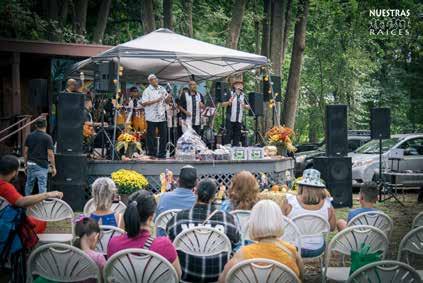
Philly’s Puerto Rican Day Parade embodies strength of the mainland’s second-largest Boricua community
HÉCTOR M. VARELA RIOS | Assistant Professor of Theology, Villanova University
This article was originally published in The Conversation | September 8, 2025.
Picture this: Puerto Rican flags, referred to as “la monoestrellada” –the “one-starred” – everywhere you look. The smell of alcapurrias – if you can find them! – and other savory fritters wafting through the air. The rhythms of salsa or Bad Bunny’s trap reggaetón blasting out of speakers. Almost everybody speaking some version of “españinglés,” or Spanglish.
Philadelphia’s annual Puerto Rican Day Parade is chaotic, loud and hard not to love.
On Sunday, Sept. 28, 2025, Boricuas from across the city will converge on the Benjamin Franklin Parkway to celebrate their heritage and traditions with music, dance, floats, food and general revelry. Boricuas is how Puerto Ricans often refer to themselves, as the island was called Borikén by the Indigenous Taínos before the Spaniards arrived in 1493.
I am Puerto Rican, island-born and raised. I currently live in Philadelphia and teach theology and Latin American studies at Villanova University. I call myself a “diasporican” in contrast to what I would call “islandricans,” or Puerto Ricans who live on the island. For me and many other diasporicans, being Puerto Rican embodies mixed feelings, or ambivalence, about identity and history. For example, I am both Boricua and Latino, de allá y de aquí. I grew up colonized yet now live in the colonizing country. I think in two languages. I eat arroz, habichuelas y carne guisada and also hamburgers. I like Guns N’ Roses and Calle 13. I perform my PuertoRicanness in myriad ways.
Puerto Rican identity is complicated
Parades are public demonstrations of community identity.
In the Puerto Rican Day Parade, symbols and traditions are used to communicate what being Puerto Rican is and means, be it islander or diasporic, historical or contemporary, and traditional or alternative. But these symbols and traditions are open to interpretation.
Waving la monoestrellada can mean pride in Puerto Rican culture and history. Or value and respect for the island as a U.S. territory. Or even a call for independence from the U.S. Meanwhile, parade dancers perform Indigenous, Spanish and Afro Caribbean dances for what is ostensibly a singular ethnicity.
Being Puerto Rican means different things to different people while being strictly policed by those same people.
For example, Boricuas are often bilingual, yet their proficiency in Spanish and English can be used to measure just how Puerto Rican they are. On the one hand, Spanish is the most common language spoken at home for islandricans, yet English is more prevalent among diasporicans. On the other hand, speaking Spanish with a gringo accent could mark you as an outsider on the island, while not speaking English at all could be seen as backward in the diaspora. It’s complicated.
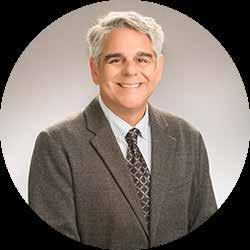
Cultural anthropologist Yarimar Bonilla captured this ambivalence in her July 20, 2025, op-ed in the Puerto Rican newspaper El Nuevo Día. Bonilla discusses Bad Bunny’s 30-date concert residency in Puerto Rico. Bad Bunny chose the island for his shows, adjusted dates and pricing to favor islandricans, and art-directed the concert to highlight Puerto Rican history and culture.
“[The concert] is not simply an unprecedented artistic achievement; it is also a political statement,” Bonilla writes. “Arraigo (rootedness) is not what binds [Puerto Ricans], but what empowers us.” Another version of the op-ed was published in English in The New York Times on Aug. 3, 2025.
According to Bonilla, Bad Bunny’s concert series can be interpreted as “a gesture of love” – love for Puerto Rico, no matter where you are, and for all Puerto Ricans, no matter how they are.
Puerto Ricans have been a vibrant presence in Philadelphia for more than a century.
According to U.S. Census Bureau data, a little over half of all Latinos in the city are Puerto Rican. Indeed, Philly is home to the secondlargest Puerto Rican community outside Puerto Rico, after New York City. Philly diasporicans certainly are a proud local bastion of Latin identity, and the parade is an outpouring of civic love via flags, music, dance and food.
And yet, diasporican arraigo also demonstrates precarity. Just look at poverty, violence and health and housing inequities that have long afflicted Fairhill and West Kensington, two adjacent and heavily Puerto Rican neighborhoods in North Philadelphia.
In a world marked by migration and disparate allegiances to empire, identity must also embrace uncertainty. Islandrican becomes diasporican, vice versa and back again. Cultural traditions shift, and the relationship to political power doesn’t stay still.
continued on next page
Philly’s Puerto Rican Day Parade embodies strength of the mainland’s second-largest Boricua community
continued from page 7
Historically, the U.S.’s treatment of Puerto Ricans both on the island and in the diaspora has fluctuated. On the one hand, it has been significantly helpful, as when island economic conditions improved through U.S. intervention after World War II, although those improvements came at a significant cost to local farming. On the other hand, it has been outright abusive, as when researchers unethically tested birth control pills on the island in the 1950s, or when the federal government undertook a slow and mismanaged response after Hurricane Maria devastated Puerto Rico in 2017. The parade, then, demonstrates a rootedness that is complex and plural, entangled with shifting identities and complicated histories. It is a gesture of a love that straddles comfort and grief. Is not love like that always, with mixed feelings?
As a recent diasporican, I am still working through how to best express my love for my community and the city. I am a proud Boricua, arraigado (rooted) in the island and in Philly. And you will find me among the throngs attending the 2025 parade, wearing my one-starred beret, eating an alcapurria and dancing salsa quite awfully.
HÉCTOR M. VARELA RIOS, PhD., the Raquel and Alfonso MartínezFonts Endowed Assistant Professor in Latin American Studies. Specializing in Latinx theology, constructive theologies, religions and materiality, and theories of religion, Dr. Varela Rios brings interdisciplinary expertise to his work. He earned a BS in Mechanical Engineering from the University of Puerto Rico Mayaguez, followed by an MA in Religion from the Evangelical Seminary of Puerto Rico, and an MA in Divinity from the University of Chicago. He completed his PhD in Theology at the University of Chicago.
Varela Rios’s work is published in numerous in scholarly articles, including “Sancochando Theological Anthropology: One Puerto Rican Heavy Soup as Heuristic” in Perspectivas: Journal of the Hispanic Theological Initiative (2018) and “Using Latinx Theology’s Lo Cotidiano to Decolonialize Oller’s El Velorio” in the Journal for Religion, Film and Media (2021). Dr. Varela Rios is also the author of the essay “In Defense of Latinx: A Theological Microintervention” in the book Why Can’t We Wait: Racism and the Church (2022).
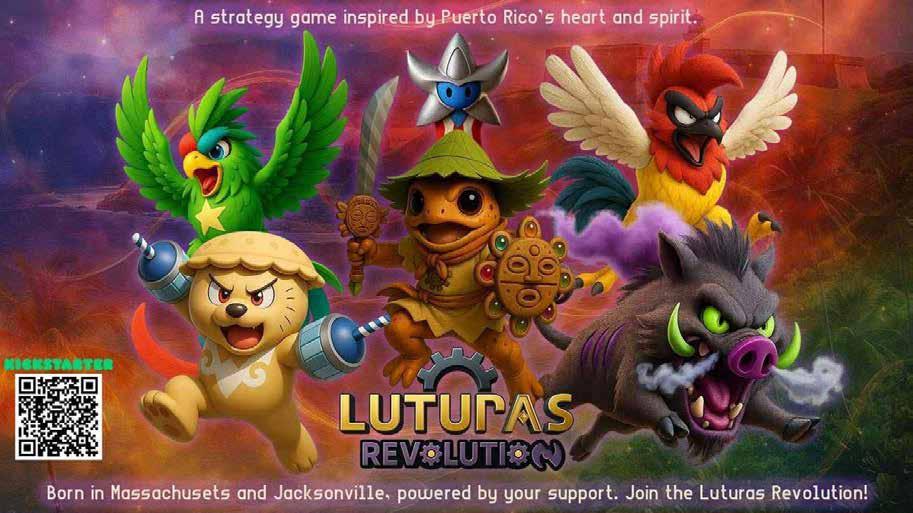
MIGUEL L. ARCE and JOSÉ P. ARCE
Do we need to discuss Gaza?
What do we have to do with Gaza? Doesn’t the distance separating us from the events on the other side of the world, allow us the luxury not to be called to answer for the cruel suffering of others? Can’t we ignore desperate people or merely mourn as Palestinians are dragged through hell? What is it to us? We could easily accept the deception, the fraud, and the lies that veil the constant tragedies taking place. We could pray that at this very moment the crimes against God being perpetrated in Gaza might motivate all who read this Opinion Piece so that they will reach out with whatever they have.
The cost of war
In his final speech as President, Dwight D. Eisenhower, who had been the Supreme Commander of the Allied Expeditionary Force during the Second World War, warned against the dangers of the “military-industrial complex” and its influence on government. He foresaw that the government would be compelled to create a permanent armaments industry of vast proportions. He declared, “every gun that is made, every warship launched, every rocket fired signifies, in the final sense, represents a theft from those who hunger and are not fed, those who are cold and are not clothed.” Eisenhower foresaw the implications of prioritizing military resources over our important moral imperatives (National Archives, President Dwight D. Eisenhower Farewell Address to the Nation, January 17, 1961)
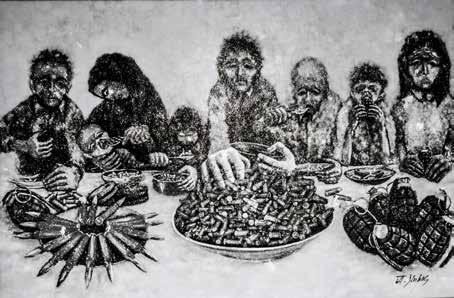
Painting of “People Eating Ammunition” (Andre Dluhos,1940 - )
Brown University’s Costs of War Project released a report detailing America’s monetary commitment to Israel since October 7, 2023. It concluded that United States has approved at least $17.9 billion on military aid to Israel, the highest given in a single year since the United States began granting Israel aid in 1959 (AP, October 7, 2024). The Brown Daily Heard (September 20, 2025) estimates $22 billion has been given during the same period. Much of the United States weapons delivered over the years were munitions, from artillery shells to 2,000-pound bunker-busters, and precision-guided bombs. This is part of the military-industrial complex, the impending evil, that Eisenhower (who saw the devastation of World War II first hand) alerted us to.
The United Nations has demanded an immediate and permanent ceasefire in Gaza. United States repeatedly vetoed multiple United
Nations ceasefire resolutions and shielded Israel from international legal scrutiny even as the humanitarian conditions have worsened. The United Nations Security Council (made up by 15 members with any one member with the ability to veto) resolution demanded an immediate, unconditional and permanent ceasefire in Gaza and that Israel lift all restrictions on aid deliveries to the Palestinian enclave. On September 18, 2025, the United States cast its sixth veto at the United Nations over the war in Gaza (Reuters, September 18, 2025).
The 14 other members of the United Nations’ most powerful body voted in favor of the resolution, which describes the humanitarian situation in Gaza as catastrophic and called Israel to lift all restrictions on the delivery of aid to the 2.1 million Palestinians in the territory. The outcome further highlights United States and Israeli isolation on the world stage over the two-year war on Gaza. The vote came just days before the annual gathering of world leaders at the United Nations’ General Assembly, where Gaza was to be a major topic. Major United States’ allies have recognized an independent Palestinian state. This recognition is largely a symbolic gesture but, nonetheless, further divides the United States from traditional allies, including the United Kingdom, Australia, Canada, and France. According to Newsweek (September 22, 2025), 153 members of the 193-member United Nations, have recognized the Palestinian State. On-going genocide
What is transpiring in Gaza are the most serious crimes under international law. The genocidal operation is on-going according to genocide experts: Shmuel Lederman, William Schabas, Melanie O’Brien and Dirk Moses and others from six countries (Israel Academia Monitor, May 2025; numerous citations in A Not So Textbook Case of Genocide). Francesca Albanese, the United Nation’s top expert on Palestine, authored two reports last year documenting the genocide that was taking place in Gaza.
Genocide is defined in the United Nations Convention of 1948: the definition contained in Article II of the Convention describes genocide as a crime committed with the intent to destroy a national, ethnic, racial or religious group, in whole or in part (https://www.un. org/en/ genocideprevention/documents/Genocide%20Convention-FactSheetENG.pdf). The horrors that the Israel Defense Force is perpetuating in Gaza display an extraordinary indifference to the mass atrocities that are live streamed to our homes. Every building, every home, being destroyed concentrates the whole Palestine population into an ever-shrinking geographic area where mass starvation can be easily orchestrated. In fact, Israel announced its starvation plan in October 2023 (Amnesty International, August 2025).
Starvation is knocking on everyone’s door according to United Nations Secretary-General António Guterres, who called the situation a “horror show.” Amnesty International, Oxfam, Doctors Without Borders and others all report the same thing: no food, no bread, no drinking water, no rice, no sugar, no cooking oil, no fuel…no nothing. It is a comprehensive humanitarian collapse. The International Court of Justice has found that what we are witnessing is the “fastest starvation campaign in modern history” (Michael Fakhri, the United Nation’s Special Rapporteur on the Right to Food, July 23, 2025).
There is a blockade of food, water, fuel, medicine and supplies.
continued on next page
from page 9
Since March 1, 2025, nothing has entered into Gaza. According to Oxfam that has a humanitarian role in Gaza, 30% of people do not eat for days at a time. People are collapsing in the streets from hunger and dehydration. Nearly 12,000 children under five were diagnosed with acute malnutrition in July, the highest monthly figure to date. Sadly, ReliefWeb (May 2025), documents a deeper crisis than the July report with one in five Palestinians in Gaza suffering from acute malnourishment. Disease outbreaks are adding to the pressure. When hungry people seek food at distribution sites, they are massacred. Palestinians are wasting away before a world audience. Severe famine is taking place and it is of Israel’s making. Can one put into words how it feels to be forcibly starved to death? The humanitarian collapse is beyond words.
Health Worker Fatalities
The number of fatalities reported in Gaza and the diminishing number of medical personnel, and deaths of innocent civilians are tentative; nonetheless, they remain a good faith effort to accurately report what is unfolding in the Palestinian. The numbers reported by various agencies will not necessarily align with each other, though all document a growing crisis in Gaza. With that caveat we can say that in 2021, there were approximately 14,054 registered doctors both in the West Bank and Gaza. In 2023, there were 15,223 (Palestinian Central Bureau of States, July 4, 2023 ). Since the start of hostilities in October 2023, a significant number of health workers have been killed. A September 2024 report from the Gaza Health Ministry cited by Al Jazeera claimed 1,151 fatalities. A more recent September 2025 report from the Gaza Health Ministry cited by Al Jazeera states that at least 1,723 healthcare workers have been killed. Other sources report different figures, with Healthcare Workers Watch confirming 587 killed as of October 2024 and noting that 105 of Gaza’s most experienced physicians were either killed or detained.
Public Health
Public health conditions in Gaza are “catastrophic”, with the hospitals that survive operating far beyond capacity. Most life-saving medicines are totally out of stock, while deaths from malnutrition and disease are on the rise. Bed occupancy in major facilities is exceeding limits by large margins – Shifa Hospital is at 250 per cent capacity, Nasser at 180 per cent, Al-Rantisi at 210 per cent and AlAhli at over 300 per cent. Hospital personnel are not exempt from intense feelings of fear, shock and disgust; the military violence does not limit itself to not attacking hospitals. On one such occasion (August 28) Nassar Hospital came under tank fire murdering medical personnel, journalist and others.
The critical shortage in medications and consumables continue and have only been exacerbated (United Nations News, August 12, 2025). Israel Defense Forces cite safety concerns for not allowing

the entrance of life saving personnel, equipment, supplies, and medicine. The United Nation’s World Health Organization says that what it calls Israel’s “arbitrary denial” of emergency medical staff is leading to more deaths in Gaza — where health authorities say Israeli strikes have killed about 1,500 local medical staff since the start of the war in October 2023. Countless others have been repeatedly displaced by Israeli attacks (NPR, August 28, 2025). Due to the intrepid boldness of the medical personnel, they courageously attempt to provide health care in locations that put themselves at risk. Blocking access for international medical teams and supplies remains a major obstacle. Doctors and nurses have been among the last remaining international witnesses to the war’s catastrophic toll on civilians. Israel Defense Forces have barred almost all foreign reporters from the Palestinian enclaves and consequently unprecedented numbers of Gaza-based Palestinian journalists have been killed by Israel.
Beyond their watchdog role, journalists are information disseminators, responsible for collecting, analyzing, and presenting facts accurately and objectively. Journalists are crucial in shaping public opinion, holding those in power accountable and promoting democracy (Weigel, November 4, 2023). These reporters play a pivotal role in providing the public with accurate information about events of the day, whether they be ordinary or extraordinary. War journalist in particular play a key role in documenting evidence of war crimes. In locations where manipulation, misinformation and propaganda exist, journalism is crucial for providing solid, verifiable facts. Sadly, it is reasonable to conclude from the larger number of journalists who are dying or being wounded that they—who have data and concrete, verifiable evidence documenting the genocide of the Palestinian people in Gaza—are being targeted to eliminate witnesses of the ongoing slaughter committed by the Israel Defense Forces.
According to the Committee to Protect Journalists, Israel’s war on Gaza is more deadly to journalists than any previous war throughout history (Foreign Policy, August 29, 2025). The International Federation of Journalists (September 9, 2025) have documented that at least 222 Palestinian journalists and media workers have been killed through Israeli air strikes, drones, bombings, gunfire, shelling from tanks, missile strikes, and sniper fire. They have been targeted in their homes with or without their families. They have been targeted in their cars, in refugee camps, and in hospitals. Even more insidious is when first responders, including journalist, arrive at bomb sites, second strikes follow the first strikes. First responders and journalist come and are struck again. It is called “a double tap”. On August 25, 2025, one such double tap killed five journalists from AP and Reuters at Nassar Hospital.

continued from page 10
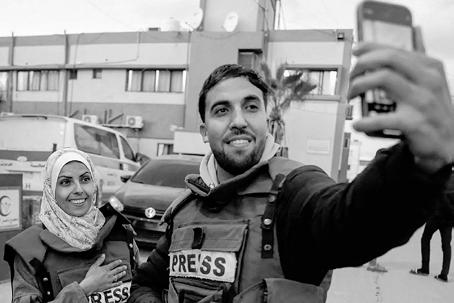
Uprooting people—again.
Five hundred villages were uprooted during the Nabka, the Catastrophe, in 1948 when Palestinians were forcibly removed. In 1948, 77 years ago, there was the mass expulsion of Palestinians from their homes during the creation of the State of Israel. Zionist military forces attacked major Palestinian cities and destroyed some 530 villages resulting in the death of about 15,000 Palestinians through a series of mass atrocities, including dozens of massacres as part of ethnic cleansings.
Palestinians have lived in the land of their fathers and their fathers before them. Palestinians have had settlements for over three millennia in Gaza. In fact, they have been established in Gaza for over three millennia, with evidence of continuous habitation dating back to at least the 15th century BCE. This long history indicates a deep-rooted presence of Palestinians in the region. Those communities’ developed rituals, storytelling, and traditions to preserve and pass on memories. These acts of remembrance— such as oral traditions, religion, music, and arts—have been the mechanisms for transmitting cultural heritage and history across generations. Cultural and historical memories are essential to the formation and the preservation of a people’s sense of self, or identity. This central reality cannot not be easily dismissed as insignificant.
Memories are the foundation upon which vibrant communities are constructed. They provide a shared pool of experiences, knowledge, and information that define a group’s identity and create a sense of belonging among its members… By understanding the intricate relationship between individual recollections and collective experiences, we can appreciate the essential role that memories play in shaping and sustaining . . . communities. (El Sol Latino, Opinion Editorial, September 2025).
Figs, grapes, oranges and olives are part of Palestinian culture. For hundreds of years, in early October, people gather olives. Families gather together in groves to pick olives from trees which have been passed on for generations. There is a particular terror for shepherds and farmers, deeply rooted to the land, when thousands of their olive
trees are uprooted and burned as a hateful act. They are forced to make a painful decision. Across Gaza, about 1.9 million people, roughly 90% of the population, are displaced, many multiple times. Schools that once sheltered families are largely unusable, and the risks of illness are rising fast (Heal Palestine, September 20, 2025). If they remain, they have been told they will not be safe. If they leave (countless cannot due to a wide variety of reasons), they leave with their keys in their pockets expecting to come back. As a poet articulates in “How are you 2.0?”: “The plight of the Palestinian people is not over, our keys remain our keys, our trees remain our trees….”
“Reach out with whatever you have”
There are people who are shining examples for the rest of us and in a world going dark they are the needed beacons of hope.
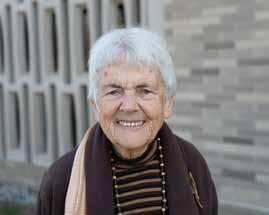
Sister of Saint Joseph Jane Morrissey provides a life example of believing, supporting and taking action. Her ministries flow from the Sisters of Saint Joseph mission, “that all may be one.” Her life is an illustration of a lifetime of nonviolent action. Examples of nonviolent protest and persuasion and intervention can be found in her book, Finding Jane in a box. Undoubtedly, a large number of additional methods have been used by others. Saul Alinsky (a pioneer of community organizing) provides descriptions of historical, social, economic, and political non-cooperative approaches. Dr. Gene Sharp identifies a multitude of methods (The Politics of Nonviolent Action, 1973). Sister Jane Morrissey, Saul Alinsky, Gene Sharp and a multitude of others have stood up and displayed courage and confidence in challenging oppression and injustice. They have displayed the quality of mind or spirit that have enabled them to do the right thing, despite difficulties, without fear.
In 1940, the Nazis forced Warsaw’s more than 400,000 Jewish residents into a small locked ghetto area, where thousands died every month from disease and starvation. During the Nazi control of the city, Irena Sendler, who was a social worker, had access to the Warsaw Ghetto, where hundreds of thousands of Jews were imprisoned. Sendler was able to aid the residents in the Ghetto daily. She risked her life in saving over 2,500 Jewish children from the Holocaust. She used what she had—in this instance, her profession—to access the Warsaw Ghetto as a child welfare worker to rescue Jewish children. Working with others, she and her compatriots clandestinely demonstrated extraordinary courage and humanity in the face of overwhelming danger. In a similar fashion, Sister Jane Morrissey, Saul Alinsky, Gene Sharp, along with Irena Sendler remind us of the profound impact our endeavors can have in the life of the individual and the community.
by Dr. SONIA E. DINNALL | Superintendent
of Springfield Public Schools
October is College and Career Awareness Month, and I am honored to shine a light on the futures of our students. Each child in our classrooms deserves to see a clear path leading to success after high school.
A college degree or career credential opens the door to higher wages and changes lives. Such empowerment begins in classrooms rooted in a steadfast belief that every child can thrive. It strengthens each time we show students what is possible and guide them toward the tools to achieve it.

One of the most important tools for accessing college is the Free Application for Federal Student Aid, known as FAFSA. Completing this application unlocks grants, scholarships, and other financial support that make higher education possible. In Springfield, we have seen encouraging progress in FAFSA completion rates across our high schools, but we also know there is more work ahead. Every student who completes the FAFSA gains greater access to the resources that can carry them into college and career success. And beginning July 1, 2026, FAFSA will also be usable for many career and trade school programs, expanding opportunities for students who wish to pursue skilled professions.
This month, schools across Springfield will celebrate College and Career Awareness Month with activities designed to spark conversations about life beyond graduation and support students and families as they plan for what lies ahead, including resources and guidance to ensure more of our young people complete the FAFSA and take that important step toward opportunity.
To our families and partners, I extend my gratitude. Your encouragement, your stories, and your guidance help our young people imagine themselves as college graduates, skilled career professionals, members of the military, and future leaders of Springfield.
I believe in the Springfield Public Schools staff, the finest educators in the Commonwealth of Massachusetts. I believe in our students, the brightest minds of the next generation. I believe in Springfield, where belief fuels progress.
And I believe that together, we are building a brighter tomorrow by preparing every student for college, career, and beyond.

Cada creencia, cada solicitud: por qué es importante la FAFSA
Octubre es el Mes de la Concienciación sobre la Universidad y la Carrera Profesional, y es un honor para mí arrojar luz sobre el futuro de nuestros estudiantes. Cada niño de nuestras aulas merece ver un camino claro que le lleve al éxito después de la escuela secundaria.
Un título universitario o una credencial profesional abre las puertas a salarios más altos y cambia vidas. Este empoderamiento comienza en las aulas, arraigado en la firme creencia de que todos los niños pueden prosperar. Se fortalece cada vez que mostramos a los estudiantes lo que es posible y los guiamos hacia las herramientas para lograrlo.
Una de las herramientas más importantes para acceder a la universidad es la Solicitud Gratuita de Ayuda Federal para Estudiantes, conocida como FAFSA. Completar esta solicitud da acceso a subvenciones, becas y otras ayudas económicas que hacen posible la educación superior. En Springfield, hemos visto un progreso alentador en las tasas de cumplimentación de la FAFSA en nuestras escuelas secundarias, pero también sabemos que aún queda mucho por hacer. Cada estudiante que completa la FAFSA obtiene un mayor acceso a los recursos que pueden llevarlo al éxito universitario y profesional. Y a partir del 1 de julio de 2026, la FAFSA también se podrá utilizar para muchos programas de formación profesional y escuelas de oficios, lo que ampliará las oportunidades para los estudiantes que deseen dedicarse a profesiones cualificadas.
Este mes, las escuelas de Springfield celebrarán el Mes de la Concienciación Universitaria y Profesional con actividades diseñadas para fomentar el diálogo sobre la vida después de la graduación y apoyar a los estudiantes y sus familias en la planificación de su futuro, incluyendo recursos y orientación para garantizar que más jóvenes completen la FAFSA y den ese importante paso hacia nuevas oportunidades.
A nuestras familias y socios, les expreso mi gratitud. Su aliento, sus historias y su orientación ayudan a nuestros jóvenes a imaginarse a sí mismos como graduados universitarios, profesionales cualificados, miembros del ejército y futuros líderes de Springfield. Creo en el personal de las Escuelas Públicas de Springfield, los mejores educadores de la Mancomunidad de Massachusetts. Creo en nuestros estudiantes, las mentes más brillantes de la próxima generación. Creo en Springfield, donde la fe impulsa el progreso.
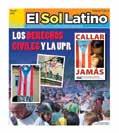
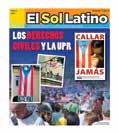

Fechas de la exposición: del 7 de octubre al 11 de noviembre de 2025. Recepción inaugural: 7 de octubre de 2025, de 4:30pm-6:30pm, con una mesa redonda de artistas a las 5pm.
El Museo Wistariahurst se complace en anunciar nuestra próxima exposición en octubre, Identidad en Tinta: el Arte del Tatuaje. A pesar del reciente aumento de interés, el arte del tatuaje es una de las tradiciones más antiguas de la historia de la humanidad. El grabado de imágenes y símbolos en la piel existe desde hace miles de años y ha tenido innumerables significados a lo largo de diferentes culturas y épocas. Los griegos, los antiguos nómadas, los antiguos egipcios, los pueblos indígenas y muchas otras comunidades han utilizado los tatuajes para resaltar su identidad. Algunos siguen arraigados en la tradición y los rituales, pero los tatuajes han evolucionado hasta convertirse en poderosos símbolos de autoexpresión, narración e identidad.
Tatuadores y aprendices de todos los orígenes presentaron obras moldeadas por su herencia cultural, sus experiencias vividas y su historia personal. Desde pieles tatuadas hasta piezas de arte, estas obras se basan en métodos tradicionales, incorporan un simbolismo poderoso o traspasan los límites con diseños modernos. Los artistas que participan en esta exposición son Caitlyn Abdow, Jennifer Broy-Peters, Kenzie Lee, Kevin Stiles, Kire Franklin, Mo Jiwun, Soul L y muchos más. Podrás ver fotos de su trabajo como artistas profesionales, pero también su talento artístico fuera de ese medio.
Identidad en Tinta: el Arte del Tatuaje estará abierta al público del 7 de octubre al 11 de noviembre de 2025. Acérquese el 7 de octubre, de 4:30pm-6:30pm, a nuestra recepción inaugural, con una mesa redonda de artistas que comenzará a las 5pm. El horario de apertura de la galería para esta exposición será los lunes (de 10am-2pm) y los martes (4:30-6:30pm). El horario de la galería es abierto y gratuito para el público, de modo que todos los miembros de nuestra comunidad pueden pasar a explorar esta exposición, descubrir un arte único y participar en actividades educativas sobre la historia de los tatuajes. ¡Esperamos verte este otoño!
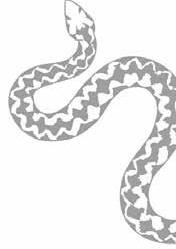
Wistariahurst es un centro educativo y cultural propiedad de la Ciudad de Holyoke y apoyado por la Fundación Wistariahurst. Wistariahurst se dedica a preservar la historia de Holyoke e inspirar apreciación a la historia y la cultura a través de programas educativos, exhibiciones y eventos especiales. Inscrita en el Registro Nacional de Lugares históricos, Wistariahurst es la antigua casa de William Skinner, un prominente fabricante de seda, y fue construida en 1874.
Hoy, Wistariahurst ofrece una amplia variedad de programas y eventos públicos que incluyen: talleres, conciertos, conferencias y demostraciones, sirviendo a la comunidad a través de programas educativos, asociaciones comunitarias, proyectos de historia y actividades de divulgación.
Hay más información disponible en www. Wistariahurst.org.

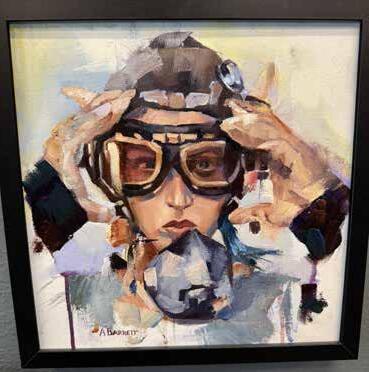
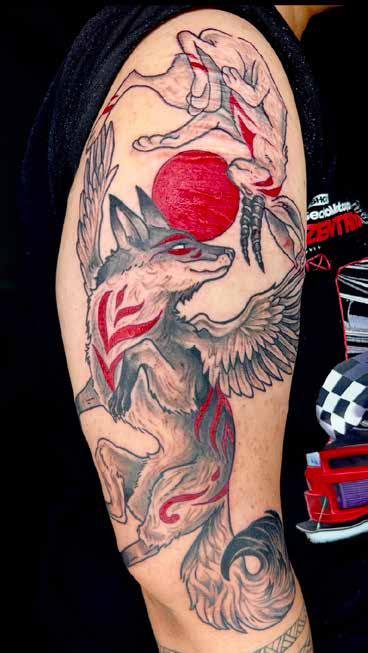
por JOSÉ EDGARDO CRUZ FIGUEROA
La noticia del día era la caravana de inmigrantes que había salido de Guatemala con rumbo a los Estados Unidos. Al llegar a México, ya sumaba 7,000 marchantes y en el reportaje televisivo sobre el evento el tono era de alarma. El presidente estadounidense había declarado la noche antes que “a los Democratas les encantan las caravanas. Nosotros vamos a proteger la frontera y vamos a impedir que nos invada esa turba de drogadictos, violadores y maleantes”. Yo me eché a reir violentamente y una señora se me quedó mirando.
Maribel y yo decidimos ir a un museo donde se exhibía una colección de esculturas de vidrio. En el estacionamiento había solo una decena de carros. No era una exposición muy popular. Mientras Maribel y Esther se preparaban, yo caminé hacia el edificio para comprar las taquillas. En la entrada dos empleados, uno flaco y el otro rotundo y con bigote colorado, se encargaban de venderlas. Cuando les dije que venía con mi esposa y mi hija, se miraron en silencio con ojos de duda y preocupación. Al decir “mi hija” y ver que ella no estaba no sabían si darme para ella la taquilla más barata. Al cabo de tres segundos, ambos se encogieron de hombros en un gesto que decía está bien, de seguro no pasa nada. Yo comprendí su miedo y les dije: “Ella tiene 28 años así que...” Entonces dejaron de aguantar la respiración y con una sonrisa de alivio me dieron las taquillas.
Estaba sentado en el inodoro de un baño en el primer piso de un dormitorio en la universidad. El baño tenía tres paredes y una ventana de cristal cuadrada que iba del piso al plafón y de pared a pared. Ésta se abría hacia el patio desde donde los estudiantes caminaban hacia el parking. Era el día de la familia. Cuando alcé la vista noté que dos señoras afroamericanas, una de ellas con el pelo recogido en moños amarrados con cintas blancas, estaban frente a la ventana del baño mirándome. Yo tenía una camisa de cuadros. Mis calzoncillos eran anaranjados. Mis pantalones eran negros. Todos estaban al nivel de mis rodillas y entre los calzoncillos y el pantalón se veía el calzoncillo largo contra el frío que llevaba puesto ese día. El calzoncillo largo era de seda. Al ver a las señoras mirándome, paradas frente a la ventana como estatuas, por un momento no supe si era yo o ellas quienes estaban en vidriera. Entonces me di cuenta de que lo que yo pensé que era una ventana era una puerta de cristal opaco.
Ese día no hacía sol y la turbulencia era considerable. No era el cielo el que estaba turbulento sino la casa de Sofía. Era una casa pequeña de una sola planta. La gente pobre del sur se referían a ese tipo de hogar como casas de escopeta pues cualquiera que se parase en la puerta de enfrente podía matar a otro parado en la puerta de atrás de un disparo. La casa de Sofía no era tan pequeña que se pudiese ver directamente a una persona de un extremo de la casa al otro, pero estaba construída acorde al mismo concepto. Así que con un tiro recto una bala podía viajar desde el balcón hasta el patio de atrás. Solo que antes tenía que atravesar un cristal y varias puertas. Para matar a quien estuviera en un extremo de la casa había que adivinarlo. V
La cuestión es que la turbulencia se debía a que se estaba celebrando una boda. Más que turbulencia era algarabía. Sofía estaba vestida con un traje verde claro y se veía feliz. Yo pensé que una de sus hijas se casaba pero entonces la vi moverse de la sala hacia el balcón de la parte de atrás de la casa con el bouquet de novia en la mano. Eso me confundió. Caminando afuera por el lado oeste de la casa, llegué hasta la parte de atrás y vi cuando ella lanzó el bouquet de bodas hacia atrás. Luego bajó las escaleras que daban al patio propiamente y se unió al grupo de fiestantes. No sé quién cachó el bouquet, pero lo que sí vi claramente fue a Sofía besando a un hombre del grupo, un negro más alto que ella con espejuelos y el pelo trenzado. El hombre llevaba pantalones negros y una camisa odiosa de verano, de esas que le gustan a los gringos, repleta de palmeras y de color claro. Al separarse de él, Sofía miró hacia su izquierda—esta vez ella estaba parada en paralelo con el balcón de atrás de la casa, de frente al hombre, y al tornar la cara su sonrisa desapareció al verme. Estupefacto ante su felicidad, ahora brevemente truncada; ante la realización de que era ella la que se casaba, desvié mis ojos de su mirada y me dirigí hacía el frente de la casa. Me moví tal y como lo habría hecho una bala disparada en una casa de escopeta: rápido y en línea recta. Sofía corrió tras de mí pero por dentro de la casa, así que al yo disponerme a cruzar la calle, ella salió por la puerta de enfrente y me gritó: “Es Reinier, tú conoces a Reinier, no?” Lo dijo en un tono que sonó como mezcla de justificación y de disculpa. Yo giré en su dirección y me quedé callado. Después pensé que debí haberle dicho: “Sí, le conozco, pero él no te conoce a ti”.
En la noche, cuando pienso en ella suelo mirarme las manos. En los dedos siento su respiración. Recuerdo como le gustaban mis pulgares y me miro a mí mismo con ellos en su boca. Las palmas de mis manos son como espejos. Las líneas que se dibujan en una son las mismas que se dibujan en la otra. De eso no me había dado cuenta hasta el día en que se marchó, cuando dejé de pensar en nuestra sincronía. No quisiera pensar en ella pero para evitarlo tendría que cortarme las manos. Con un remedio como ese, mejor me quedo con la enfermedad. Aparte de la imagen de mis dedos en su boca lo único que me queda es el recuerdo de su nariz espléndida y del tono de contrabajo de su risa. Es tan poca cosa lo que siento y lo que recuerdo que por eso no me explico por qué no puedo dejar de pensarla.
VII
Al otro día, después de una noche llena de ruidos extraños, Arturo se alegró al ver que no se había convertido en un mosquito, o peor, en una cucaracha. En otro tiempo, habría tomado los estrépitos de la noche por dicharacheo de almas en pena o de fantasmas. Y aunque antes de acostarse, al oir los ruidos de la casa Arturo y Maribel se miraron, eso sí, solo por un instante, enmudecidos, como suspendidos en el aire, con los ojos ampliamente abiertos y las pupilas dilatadas por el nerviosismo ese que te acoge cuando te enfrentas a un evento inexplicable e inesperado, pasado ese instante se echaron a reir como necios, con carcajadas sutiles y entrecortadas. Los ruidos de la casa no eran almas en pena ni fantasmas; ni siquiera eran ratones escudriñando las paredes sino tan solo la madera del segundo piso
continued on next page
Palimpsestos continued from page 14
crujiendo por su cuenta y la tubería en el sótano a ciegas dando campanazos, todo gracias a los cambios de temperatura que avisan el paso de las hojas secas regadas por el patio a la nieve espesa que entierra la grama, la acera y el asfalto.
VIII
Cuando uno dice “al otro día” la presunción es de que se habla de esa parte del tiempo en la que el sol brilla y el cielo es claro. Pero para Arturo, la frase implicaba un mero despertar en la oscuridad de la mañana, antes del amanecer, después de una noche inquieta y un poco desesperada. La desesperación que había sentido era la usual, es decir, la que era causada por el miedo a levantarse convertido en mosquito o cucaracha. Pero esa noche, encima de eso, se había visto sudando en frío ante la anticipación de que en cualquier momento se iba a encontrar con un fantasma. No se trataba de miedo ante la posibilidad de una aparición de ultratumba sino ante la posibilidad de un encuentro con la que había sido su amante.
En el limbo de su sueño entró al edificio donde había estado la oficina del marido de ella. Subió las escaleras y al empujar la puerta de la otrora oficina de Ernesto se estremeció al ver que estaba vacía. El único signo que quedaba que permitía asumir que el cuarto había sido un espacio de trabajo era una mesa ancha y larga. Entonces escuchó una voz. Reconoció la voz como la de su abogado. “¿Dónde están los zapatos que te pusiste el día de su muerte?”, le preguntó la voz. De la puerta de la oficina caminó por un pasillo que le llevó a un closet donde había un par de sneakers en una bolsa de plástico. Esos no son mis zapatos, pensó. La voz de su abogado, que hasta ese momento había sido insistente, desapareció. Entonces se encontró de frente a otra puerta entreabierta que daba a una habitación. En una esquina de ese cuarto había una cama inmensa y en ella, debajo de una sábana blanca, un cuerpo dormido se dio una vuelta, como buscando una mejor posición o quizás un poco de aire. Al moverse, el cuerpo reveló una mata de pelo negro igual a la de su amante. Pasmado del terror que sintió, Arturo se quedó tieso. Trató de salir corriendo pero no podía dar un paso. Quería huir de lo que pensaba era el fantasma de su amante, pensando que era imposible que fuera ella misma y no una aparición, un holograma. Nunca supo si estuvo paralizado el resto de la noche pero sí quedó consciente de que el cuerpo que había atisbado no percibió su presencia y mantuvo su sueño impávido.
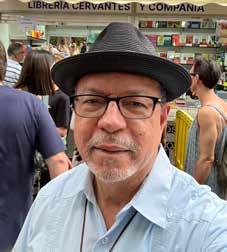
XCuando Arturo se dio cuenta de que llevaba horas dando vueltas en la cama decidió levantarse. Al llegar a la cocina notó que “el día” a las afueras de su ventana todavía no comenzaba y estaba como boca de lobo. Entonces recordó lo que le había pasado, y aunque no quedó más tranquilo al saberlo, todos los músculos de su cuerpo cedieron un poco una vez aceptó que aunque era posible que el fantasma que le puso los nervios de punta mientras dormía tenía el nombre de la mujer a quien había amado, la aparición no era real y había terminado. En la casa la madera y los tubos estaban callados. En la cocina se oía el tic tac del reloj en la pared, encima del fregadero. En la cama inmensa que estaba en la esquina de su cuarto lo único que se escuchaba era a Maribel, debajo de la sábana blanca, roncando. Es la hora del desayuno, dijo en voz baja, y prendió la luz.
XI
Recordó el día anterior, la noticia de la caravana, las declaraciones del presidente y la mirada estupefacta de la señora que no entendía por qué se reía a carcajadas. Arturo le devolvió la mirada mientras se secaba las lágrimas y la señora siguió caminando. Entró a la exhibición de esculturas de vidrio seguido por Maribel y Esther. Al abrirles la puerta volteó la cabeza y vio a Sofía con su esposo y dos niñas caminando en dirección contraria. En el museo entró al baño. La puerta era de cristal opaco. Al otro lado se oía el murmullo de la gente pasando. Dos siluetas al otro lado del cristal permanecían inmóviles, quizás esperando su turno. Pensó en el sueño de la noche anterior y se miró las palmas de las manos. En una de las líneas creyó reconocer la nariz espléndida de Sofía. Escuchó su risa de contrabajo y supo que seguía siendo humano. Más tarde, durante el día de la familia, le tocaría estar en la universidad, lo cual no era enteramente de su agrado. Todo lo que había pasado era presente porque lo seguía pensando.
JOSÉ EDGARDO CRUZ FIGUEROA (cruzjose5319@gmail.com) es natural de San Juan y criado en El Fanguito y Barrio Obrero en Santurce, Puerto Rico. Es profesor emérito de ciencias políticas en la Universidad del Estado de Nueva York en Albany.

The impact of COVID-19 has been especially devastating for communities of color. Now, more than ever, independent, local journalism needs your support. El Sol Latino is your local Latinx-owned, independent news source that brings to the front lines diverse Latino voices, perspectives, news and stories.
by NATASHA S. ALFORD • NEW YORK, GA | HARPERCOLLINS PUBLISHERS |
DESCRIPTION
Award-winning journalist Natasha S. Alford grew up between two worlds as the daughter of an African American father and Puerto Rican mother. In American Negra, a narrative that is part memoir, part cultural analysis, Alford reflects on growing up in a working-class family from the city of Syracuse, NY.
In smart, vivid prose, Alford illustrates the complexity of being multiethnic in Upstate New York and society’s flawed teachings about matters of identity. When she travels to Puerto Rico for the first time, she is the darkest in her family, and navigates shame for not speaking Spanish fluently. She visits African-American hair salons where she’s told that she has “good” hair, while internalizing images that as a Latina she has “bad” hair or pelo malo.
When Alford goes from an underfunded public school system to Harvard University surrounded by privilege and pedigree, she wrestles with more than her own ethnic identity, as she is faced with imposter syndrome, a shocking medical diagnosis, and a struggle to define success on her own terms. A study abroad trip to the Dominican Republic changes her perspective on Afro-Latinidad and sets her on a path to better understand her own Latin roots.
Alford then embarks on a whirlwind journey to find her authentic voice, taking her across the United States from a hedge fund boardroom to a classroom and ultimately a newsroom, as a journalist.
A coming-of-age story about what it’s like to live at the intersections of race, culture, gender, and class, all while staying true to yourself, American Negra is a captivating look at one woman’s experience being Negra in the United States.
As the movement to highlight Afro-Latin identity and overlooked histories of the African diaspora grows, American Negra illustrates
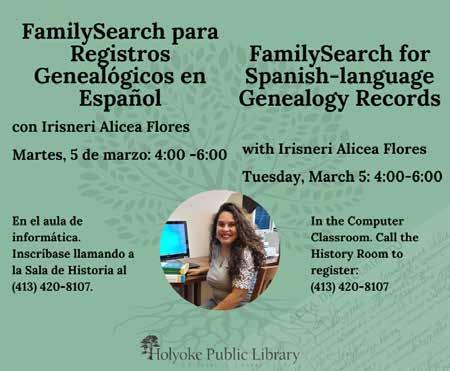
February 2025 | 288 pages
the diversity of the Black experience in the larger fabric of American society
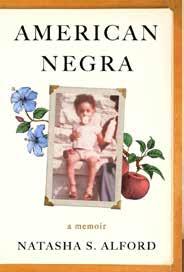
NATASHA S. ALFORD is an awardwinning journalist, host, and media executive driven by the power of storytelling to inspire and change people’s lives. Natasha serves as senior vice president of TheGrio and an anchor for theGrio TV. She is also a CNN political analyst, where she offers commentary on the news, politics, and movements of the moment. Her work has also been published in the New York Times, the Guardian, Oprah Daily, Time magazine, and Vogue. Natasha is currently completing a master in public policy at Princeton University and resides with her family in New Jersey.
“Natasha’s voice is essential in our country for so many reasons. One, she is a great journalist and political analyst. She does the work! Two, she is Afro-Latina from Syracuse! Love that! Three, in her book she makes her professional path personal and intimate and revealing, and four, that means she will inspire the next generation. Gracias por tu voz, Natasha!” — Maria Hinojosa, Pulitzer prizewinning journalist and author of Once I Was You
With American Negra, Natasha Alford shines a light on her journey through a school system that sorts students into categories long before they can define themselves. Young readers will resonate deeply with her struggle to reconcile others’ perceptions with her own sense of identity, and be inspired by her courage in defining herself, and her life’s purpose, on her own terms.” — Dr. Jennifer L. Jennings, Professor of Sociology and Public Affairs, Princeton University
“Truly moving… Reading about her journey from her hometown of Syracuse to college at Harvard, her professional life, family, health/ disability and her reckoning w being a Black Boricua in world that often erases one or both identities, was such a welcome experience.”
— Dr. Yomaira C. Figueroa-Vásquez, Director, Center for Puerto Rican Studies (CENTRO)
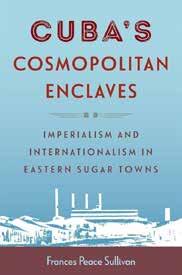
by FRANCES PEACE SULLIVAN
GAINESVILLE, FL | UNIVERSITY OF FLORIDA
DESCRIPTION
This book explores how a region in Cuba that was widely known as a site of labor subjugation became a hub of international solidarity in the 1920s and 1930s. In the early twentieth century, United States agricultural companies like the United Fruit Company established sugar export operations in Cuba’s Oriente Province, creating a zone of economic imperialism. These early multinational corporations recruited Afro-Caribbean laborers from surrounding islands, aiming to create closed, self-sufficient plantation complexes.
However, as Frances Peace Sullivan shows in Cuba’s Cosmopolitan Enclaves, the influx of foreign capital led to the development of diverse, vibrant communities in these company towns. Drawing on archival sources in Cuba, the US, Russia, and the UK, Sullivan demonstrates how immigrant workers joined local Cubans in movements for radical transnational solidarity. In the interwar years, northeastern Cuba became a center of Garveyite Pan-Africanism, global communism, and antifascist support for Republican Spain. In 1933, the region attracted the world’s attention when workers seized sugar mills in a revolutionary strike.
Placing northeastern Cuba at the heart of the history of interwar internationalism, Sullivan shows how Oriente emerged as a focal point for visions of resistance. Cuba’s Cosmopolitan Enclaves reveals how workers seized pathways created by imperialist companies and used them to advance their own goals. In this focused study, Sullivan offers a detailed portrait of how ordinary people became leaders in transnational radicalism.
An exemplary transnational history distinguished by its simultaneous treatment of multiple and diverse sociological actors in their complex
PRESS | May 27, 2025 | 298 pages
sociopolitical engagements, working-class alliances, and pan-African solidarities. Combining a variety of archival and bibliographic sources, Sullivan skillfully uses an agro-industrial epicenter in northeastern Cuba as the springboard for important regional, hemispheric, and Atlantic connections.”—Jorge L. GiovannettiTorres, author of Black British Migrants in Cuba: Race, Labor, and Empire in the Twentieth-Century Caribbean, 1898–1948
“Beautifully written and deftly argued, Cuba’s Cosmopolitan Enclaves reconstructs the vibrant social and political networks forged by sugar workers in company towns and mills in Cuba’s Oriente Province. This deeply researched book makes crucial interventions in the fields of labor and working-class history, Caribbean history, and African diaspora studies.”—Reena N. Goldthree, Princeton University
FRANCES PEACE SULLIVAN is associate professor of history at Berklee College of Music in Boston.
“An exemplary transnational history distinguished by its simultaneous treatment of multiple and diverse sociological actors in their complex sociopolitical engagements, working-class alliances, and pan-African solidarities. Combining a variety of archival and bibliographic sources, Sullivan skillfully uses an agro-industrial epicenter in northeastern Cuba as the springboard for important regional, hemispheric, and Atlantic connections.”—Jorge L. GiovannettiTorres, author of Black British Migrants in Cuba: Race, Labor, and Empire in the Twentieth-Century Caribbean, 1898–1948
“Beautifully written and deftly argued, Cuba’s Cosmopolitan Enclaves reconstructs the vibrant social and political networks forged by sugar workers in company towns and mills in Cuba’s Oriente Province. This deeply researched book makes crucial interventions in the fields of labor and working-class history, Caribbean history, and African diaspora studies.”—Reena N. Goldthree, Princeton University

Four teams participated in the 1st Women’s Volleyball Tournament, held in the birthplace of volleyball, Holyoke, Massachusetts, on September 13, 2025. The tournament took place at Fiesta Patio, known as “El Epicentro de la Cultura Boricua en Holyoke,” which is part of Fiesta Café, owned by Juan Montano, the event host.
The four teams participating were Fiesta Patio (Lilmarie Delgado, Cris León, and Nachely Matínez; Rebels (Chaira Dávila, Yari Dávila, Jenny Vázquez, Ive Serrano, and Gregner Gotay); Divas (Jajaira Dávila, Yanaira Dávila, and Michelle Martínez); Sirve y Huye (Malle Restrepo, Anexis Miranda, and Samahya Cabrera). The tournament was organized by Wilmarie Delgado and Jimmy Camacho. Wilmarie took the challenging task of searching for and recruiting players for the
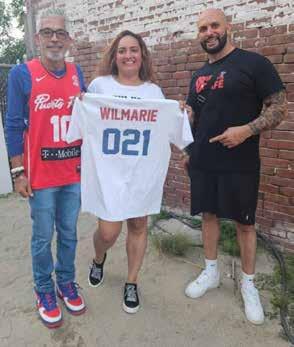
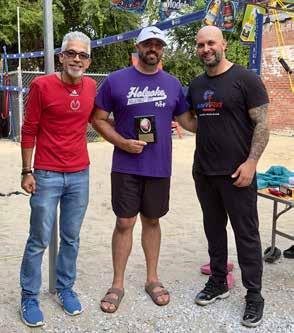
tournament. At the same time, Jimmy handled the necessary organizational logistics.
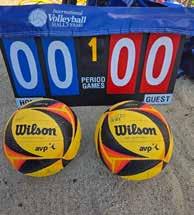
During the vent, International Volleyball Hall of Fame Executive Director George Mulry was recognized for his support of Holyoke’s Puerto Rican community and for sponsoring the Women’s Beach Volleyball Tournament. Under his leadership, a permanent exhibit documenting the history of Puerto Rican volleyball was established at the organization’s headquarters.

